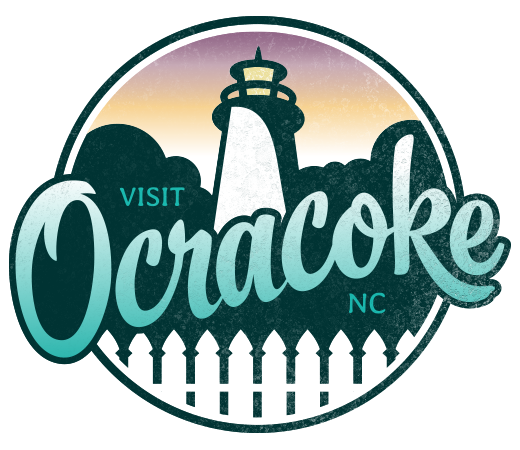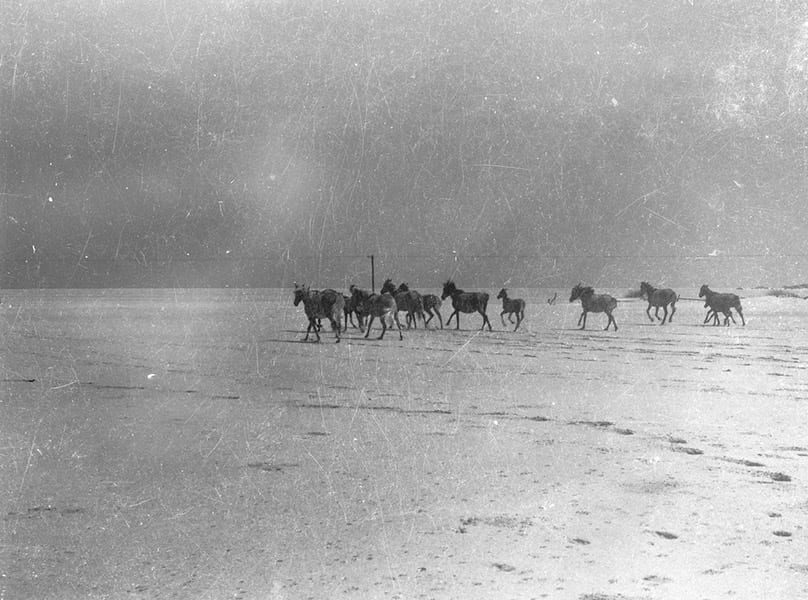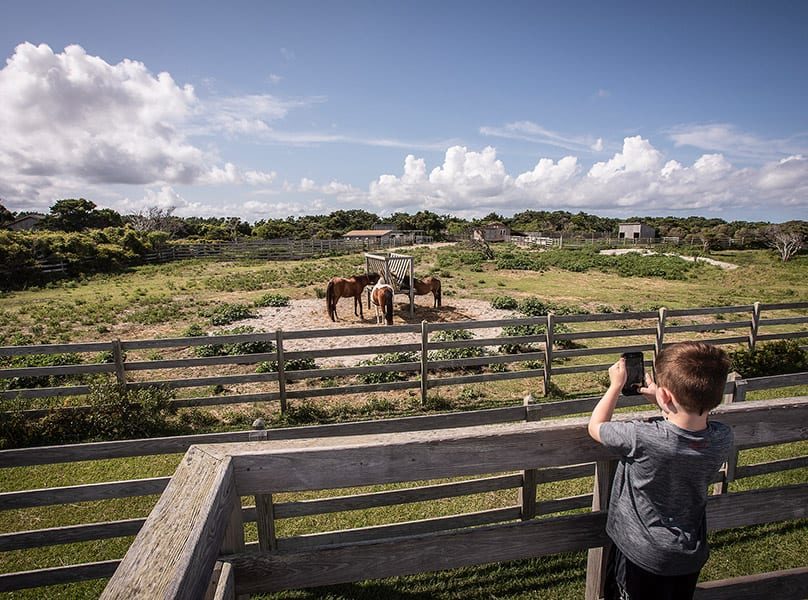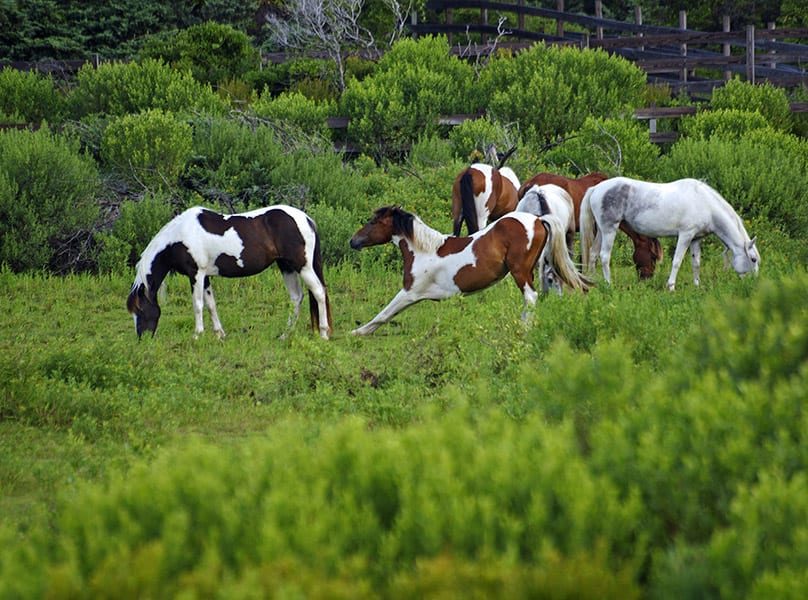Wild Banker Ponies
Several hundreds of years ago, a shipwreck just offshore left a herd of Spanish mustangs stranded on Ocracoke Island. Their descendants still thrive here today. Physically, the Ocracoke ponies are different from other horses in that they have a different number of vertebrae and ribs as well as a distinct shape, posture, color, size, and weight.
Small yet powerful, these ponies have played a major role in the island’s history starting from the time of early colonists who used the ponies to help haul carts of freight and fish. The US Lifesaving Service used them for beach patrols and to haul equipment to shipwreck sites. Later, the US Coast Guard used the Banker ponies to patrol the beaches in World War II.
As time progressed, the families that lived on the island would pen the ponies annually to sort out the ponies and brand the new ones. Some ponies would be broken for riding or sold, and the rest were turned loose to roam free again. In the 1950s, the local Boy Scout troop tamed and trained some of the horses making them the only mounted Boy Scout troop in the US.
Since 1959, the once wild Banker Ponies have been penned permanently for their protection and cared for by the National Park Service. They have 188 acres of sound-side beach and marsh to explore but prefer to hang around their paddocks and stables, especially at feeding time. You can visit them at the Ocracoke Pony Pens located off Highway 12.










